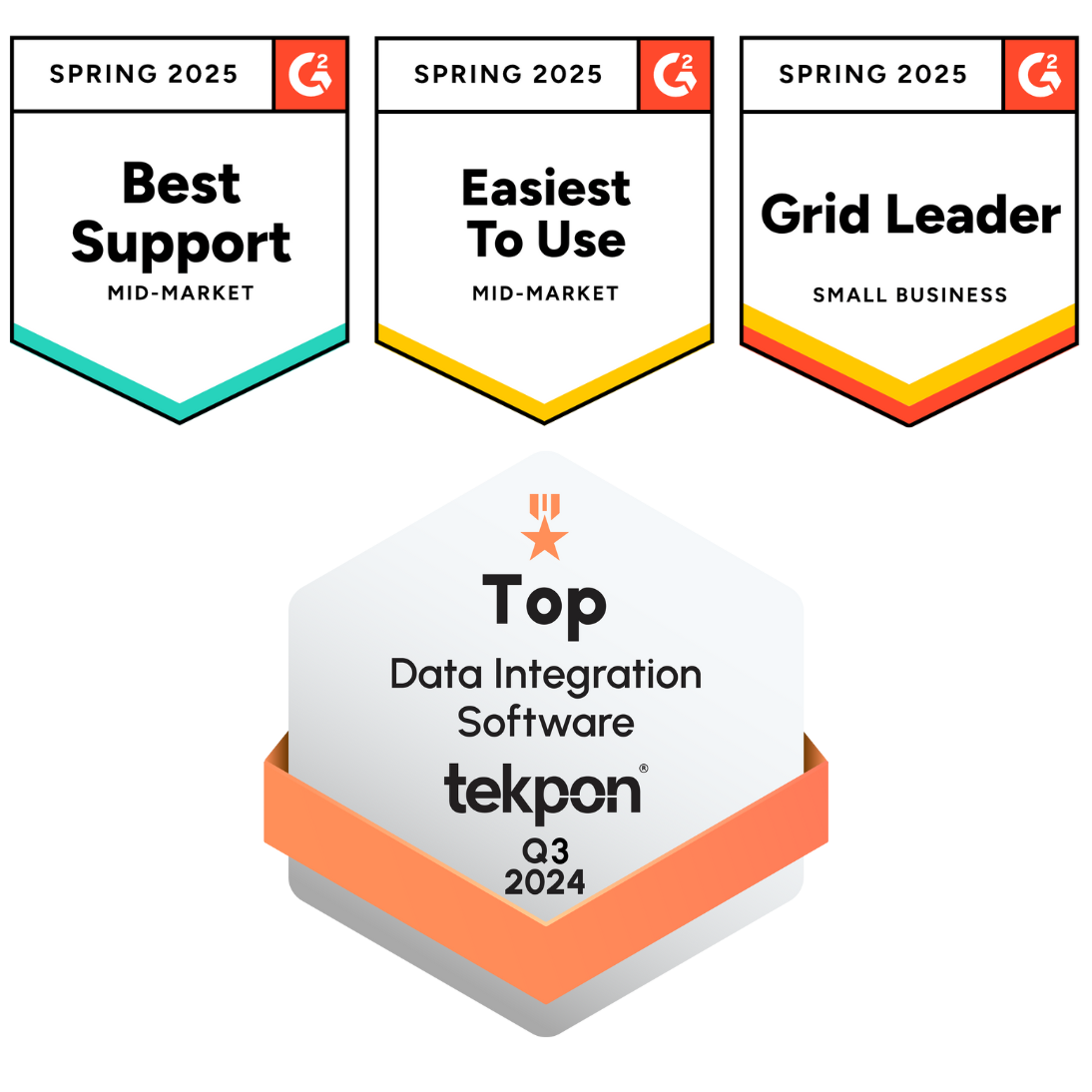What is a PIM tool?
A PIM is a Product Information Management software that helps maintain all your product information in a centralized fashion. PIM helps you manage product data with ease and syndicate data across multiple channels like Marketing, Print, Marketplaces, and eCommerce.
Of all the channels PIM caters to, one of the most sought-after PIM integrations is with eCommerce systems. The reason for this being,
- For a lot of businesses, it forms the core of the business strategy.
- Maintaining product data on the eCommerce channel isn’t user-friendly and it’s also time-consuming. (This challenge is multifold when we think of multiple languages, stores, and websites).
Product information management has various facets to it and customers are posed with various challenges based on their varying and ever-growing business needs.
 Do you need a PIM eCommerce integration?
Do you need a PIM eCommerce integration?
It depends on what pain point you are trying to solve. A few stats show that poor data quality is the major factor hindering the growth of businesses.
Poor data quality is also hitting organizations where it hurts – to the tune of $15 million as the average annual financial cost in 2017. (Source: Gartner)
Nearly 60% of organizations don’t measure the annual financial cost of poor quality data, according to the Gartner survey.
Read ahead and decide for yourself if your eCommerce business needs a PIM integration as we discuss some of the common PIM challenges and how a PIM eCommerce connector helps.
Having awareness is key. Most organizations do not even look for a way to transition because they’re used to doing things in a certain way. This is where a PIM is very effective; it helps you drive conversions, save costs, reduce redundant manual efforts, and eventually drive revenue.
Based on my experience of over 5 years working closely with various businesses, I have seen that there are just a few companies who truly understand the competitive advantage a PIM brings to the table.
I’ve listed below anecdotes of some of the common requirements that customers come up with time and again. I’m pretty sure that you already have at least one of these questions/thoughts and that’s the reason why you landed up here!
 So here we go!
So here we go!
- “We would like to manage all of our content in the same place.”
- “We do not have a large team to enrich data. We would like to leverage one of the data aggregators/content providers for the ongoing PIM process.”
- “Can we manage multiple languages from the same interface?”
- “Can the product data be synchronized over to eCommerce stores?”
- “We have workflows that are unique to our business. Is there a way of automating that?”
- “We have already invested a lot of our time into setting up product information on the ERP. Is there an easier way of leveraging this data, enriching them, and then sync the information to eCommerce channels?”
- “Will the PIM help with the maintenance of variants/configurable products of the eCommerce system?”
- “Can we maintain all of the digital assets for the products and their variants needed for the eCommerce channel in the PIM?”
- “I have a couple of users working on different aspects of product data. Are there user-specific roles which can be managed in a PIM and can we also have an approver mechanism?”
There used to be a time when there was too much dependency on the spreadsheets (even now there is, for a lot of businesses) for maintaining product data.
A PIM saves the effort required for
- Formatting data from time to time to align with the eCommerce channels,
- The addition of new attributes
- Reformatting, and assigning digital assets
- Editing data across all channels
- Managing complex PIM back-end systems in third party channels
Now, let’s see how a PIM eCommerce integration comes to the rescue for the challenges in product information management.
1. Control over a large & diversified set of SKUs
Having to maintain thousands or even millions of SKUs is not a rare sight in today’s business. Customers’ ever-changing need to personalize products with different variants of the same just adds to the complexity of maintaining product data. Most of the PIMs available in the market today help with this and some PIMs also have options for handling variants.
2. Collaboration
Businesses having distributed teams across the globe, being the norm, (For some businesses it is inevitable!) delegation of product management tasks, multiple folks working in parallel, and having approver workflows have been some of the major limitations of maintaining data on a spreadsheet. There are a bunch of PIMs with invaluable eCommerce integrations available in the market that provide solutions around this.
3. Reliability
Reliability is one of the key aspects that customers look for specifically on an eCommerce website. Imagine yourself having to make edits, remove products, change descriptions on a spreadsheet, and then get back to the eCommerce website to import the data via spreadsheet import protocols. This might not be a scalable way of maintaining data. This is where a PIM eCommerce integration for your store comes in handy.
4. HTML Content styling
You might want to work on your eCommerce platform to maintain the HTML styling codes. You must have some coding knowledge to do it or hire someone who can do it. This could be cumbersome as you might have to maintain this information in multiple places.
A PIM eCommerce integration helps to build content without the complexity of HTML codes, and also curate and maintain this information within the PIM and eventually syndicate this information from PIM to the eCommerce system.
5. Product Data Quality
This is the crux of having a PIM in the first place. With a PIM eCommerce integration, you can manage data with ease. In a lot of cases, you may want to depend on a data aggregator or external sources for your data. You can control what part of the information you want from external sources on an ongoing basis. You can also decide what part of your product information needs to be handcrafted.
With a PIM eCommerce integration on the go, you can set the standards for product data quality once, and be rest assured that the quality is maintained across multiple channels. (Until, of course, you decide to change it!)
 6. Automation
6. Automation
Another biggest challenge for eCommerce merchants is the ability to automate anything and everything right from content syndication, content enrichment, rule-based updates which surely take a lot of manual effort.
One other use case is automating the product relations (upsells, cross-sells, a customer who bought this also bought this) logic for the eCommerce channel from the PIM. A PIM eCommerce integration simply automates your product management system, decreasing the time to market and expanding the window for sales.
7. Workflow management
Setting standardized workflows is yet another challenge in eCommerce. Being able to work in a defined workflow also helps with automation to a great extent.
You can have approver workflows whereby only the approved products go into the eCommerce and other channels. This gives you complete control over what information goes into your eCommerce touchpoints. With a PIM, it is easier to set standards like scheduling product updates periodically.
8. Managing multiple languages & stores
Managing multiple languages & stores on eCommerce platforms could be a nightmare if you are to maintain this on the eCommerce system. You lose control over reusability.
For instance, you might have multiple languages and there could be common information like number-based attributes. On an eCommerce platform, you will have to input this information multiple times for multiple languages. With a PIM you can reuse a lot of information and save a lot of time.
9. Managing ever-growing attribute types & needs
Earlier, all the information was recorded in text-based attributes. The challenge with this approach was that this could not be used as part of your filters/layered navigation. Simply meaning that the searchability of products within PIM was complex with this approach.
With the eCommerce channels, there are a lot of attribute types like select, multi-select, metrics, date, digital assets (Yes, they also act as an attribute!) which help to send the right attributes values/types to the eCommerce channels.
At times, there arises a need for validation to be performed at the attribute level. For instance, you might want to restrict values for an attribute to just alphanumeric without special characters. Based on the PIM that you choose, you can manage these kinds of scenarios with ease.
 10. Overcome ERP Limitations
10. Overcome ERP Limitations
For a lot of businesses, ERP is the single source of truth for most of the information. You could look at maintaining the product data in ERP and then just sync the information to the eCommerce channels. However, an ERP has limited capabilities in terms of product information management some of which are:
- Maintenance of all kinds of attributes and marketing information that are essential for eCommerce channels.
- Product digital asset maintenance.
- Defining the category taxonomy/navigation menus for the website.
- Personalizing/handling variant/configurable products.
- And most of the advanced features which we have touched upon through this blog.
11. Distribute information
Some of your customers want access to product data for a given set of products (Usually on the B2B ecosystem). A lot of PIMs provide the option of filtering data relevant for a particular customer and then sending that over to them at ease.
12. Easy Digital asset management
Customers maintain digital assets related to the products of the eCommerce, print, and marketing channels in separate servers which involves additional cost and also demands the maintenance of the same from time to time.
PIM solutions help with the maintenance and collaboration of digital assets with ease. PIM eCommerce integration also helps you enrich and even edit the digital assets before syncing them to your eCommerce store.
13. No Manual Errors
There is always a possibility of wrong data being entered or making mistakes when editing product data in bulk in a spreadsheet. While using a PIM, the possibility of manual errors is reduced to a great extent.
14. Lesser Product returns
Incorrect product information negatively impacts the customer experience to a great extent. This leads to abandoned shopping carts and increased returns. A PIM helps you to incorporate customer feedback and make edits to product data in an ongoing fashion.
15. Faster time to market & customer loyalty
With long hours of manual and complex processes, your time to market is bound to be affected. But, with the ease of enriching product information, workflow automation, approval mechanisms, manual efforts and eventually the time to market is much lesser when you use a PIM eCommerce integration connector.
This means that the customer experience gets better and leads to customer loyalty and eventually reflecting in increased sales.
In a nutshell, for organizations working with large amounts of data, a PIM eCommerce integration helps to save a lot of effort and drive revenue.
Enjoyed reading this blog? Subscribe to our blog for information from and about the PIM world. We promise we’ll mind your privacy.
In this Story





